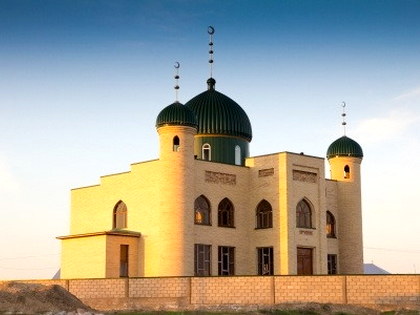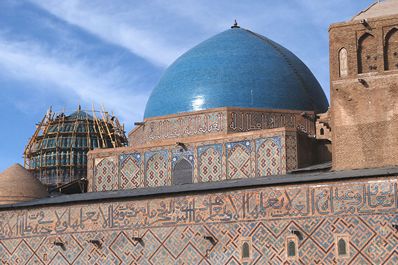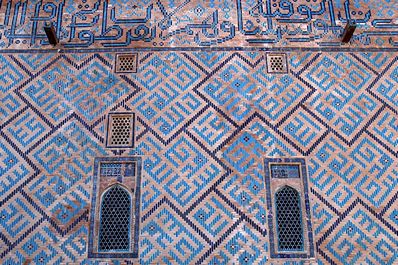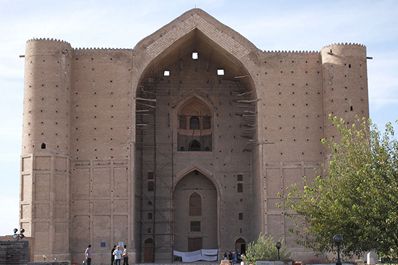Turkestan, Kazakhstan

Tours, Attractions and Things To Do in Turkestan
History of Turkestan
Turkestan is one of the oldest cities in Kazakhstan. It was founded in 418. It is known that in the tenth century the city was called Shavgar (Shavagar). It was part of the Samanids state.
In the XII century, Shavgar disappeared from written sources, but Yasi (Yassy) appeared, which was also located on the territory of present-day Turkestan.
In the XII century, the famous philosopher and poet Khoja Ahmed Yasawi lived and was buried in Yasi. In 1398, when Yasi was part of Tamerlane's empire, the ruler erected a mausoleum over the philosopher's grave and built a mosque. It is to this mausoleum that pilgrims are coming in an endless stream today. The religious complex is also included in the UNESCO World Heritage List.
Since the XVI century, Yasi has become the main city of the Kazakh Khanate. At the same time, it was renamed Turkestan. The Mint appeared here, where silver money with the image of rulers began to be printed. This is confirmed by archaeological excavations.
In 1864, Turkestan was conquered by the Russian Empire, ceased to be the capital and entered the newly formed Turkestan General- Governorship.
In 1991, Turkestan became part of independent Kazakhstan, and since 2018, the city has been experiencing a rebirth. It is gradually becoming the historical and spiritual center of the republic. Tourism has also begun to develop here. For example, in 2020, the construction of an international airport was completed in the city.
Attractions of Turkestan
The most famous attractions of Turkestan are concentrated where the mausoleum of Khoja Ahmed Yasawi is located. The poet and philosopher had great authority among Muslims during his lifetime. He died in the middle of the XII century and was buried in a small mausoleum. After 250 years, Tamerlane, who captured Turkestan, decided to erect a large memorial complex on the tomb of Yassavi. Thus, he strengthened his own authority in the eyes of local residents.
Even more Muslims began to come to the new complex. The place became revered as a shrine. Previously, it was believed that a person who visited this place three times could not go to Mecca. The tomb of the philosopher is the center of the historical and cultural museum-reserve "Hazret Sultan".
In addition to the majestic mausoleum, Tamerlane built a monastery of Sufis here, who were followers of Yassavi.
The following rulers tried to keep the mausoleum intact. With the emergence of the Kazakh Khanate, the mausoleum was for some time the residence of the khans. Also in the historical part of Turkestan there is the grave of Tamerlane's granddaughter and Mirzo Ulugbek's daughter – the mausoleum of Robia Sultan Begim – and a small necropolis of Kazakh khans – Ablay Khan, Yesim Khan, Abulkhair Khan and others. Take a look at the underground mosque of the XII century called Hilvet.
There are also interesting museums in Turkestan: the Museum of the Oriental bath, the museum of the "Juma Mosque" of the XVIII century, the Museum of Archeology and Ethnography and the Museum of the history of Turkestan.
A mandatory place to visit is the mausoleum of Arystan Baba, which is located 60 kilometers from Turkestan. The saint was the spiritual mentor of Khoja Ahmed Yasawi. They say that it is better to start your pilgrimage to Turkestan shrines from here.
The modern complex "Caravanserai", located in Turkestan, will surprise even the sophisticated traveler. Artisan streets and shopping districts have been recreated here, an amphitheater for horse shows has been built. The complex also houses the only "Flying Theater" in Central Asia. There are oriental restaurants, hotels and an entertainment center on the territory.
The railway station building, erected in 1903, is an architectural monument. Initially, the brick building with high facades was divided into three parts: the lobby and waiting rooms for the first and second classes. Architectural elements in the form of door handles, turrets and oriental murals harmoniously fit into the urban landscape. Inside the station there is a bronze chandelier and a buffet brought here at the beginning of the twentieth century.





